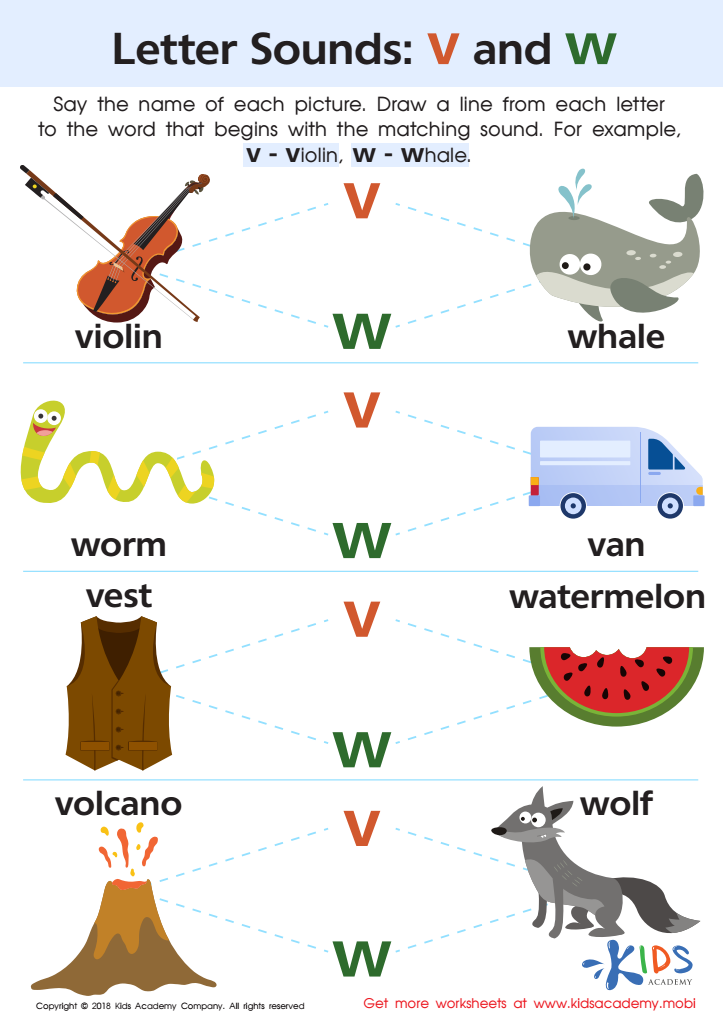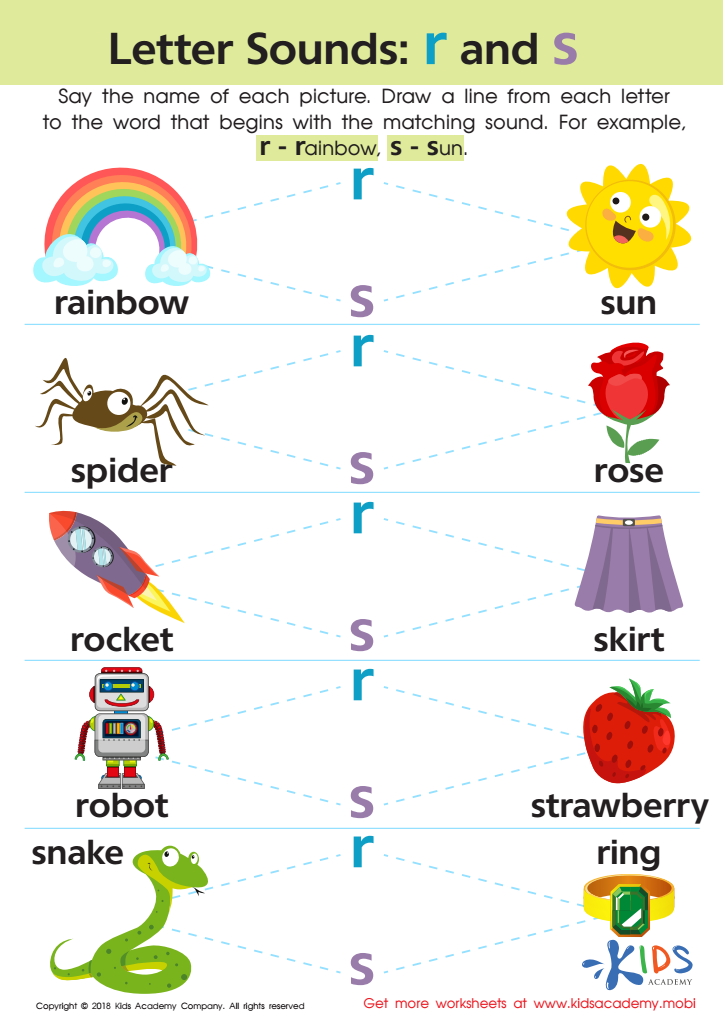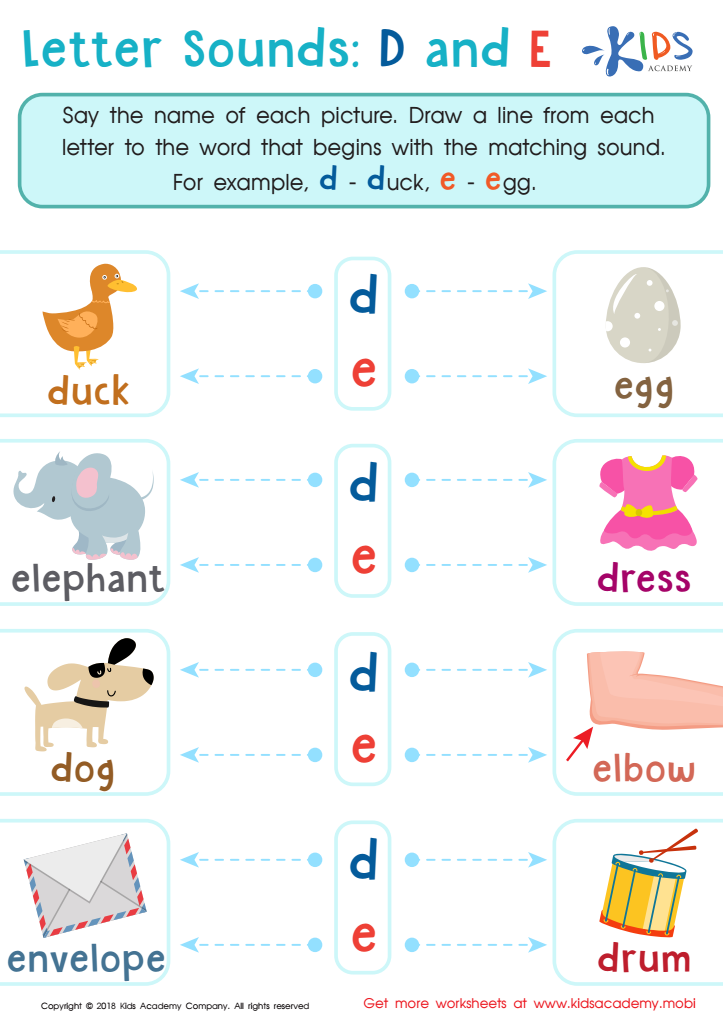Handwriting practice Normal Letter Sounds Worksheets for Ages 3-4
4 filtered results
-
From - To
Boost your child's early literacy with our "Handwriting Practice Normal Letter Sounds Worksheets for Ages 3-4". These engaging and fun worksheets are meticulously designed to help young learners develop their handwriting skills while familiarizing themselves with basic letter sounds. With a focus on both lowercase and uppercase letters, these activities encourage children to trace, write, and recognize sounds in an enjoyable, educational manner. Perfect for home or classroom use, these printables aim to build a strong foundation in phonics and early reading skills, setting your child on the path to academic success. Explore a new world of learning with our expertly crafted handwriting worksheets.


Letter P Sound Worksheet


Letter V and W Sounds Worksheet


Letter R and S Sounds Worksheet


Letter D and E Sounds Worksheet
Parents and teachers should care about handwriting practice and normal letter sounds for children aged 3-4 because these foundational skills are critical for early literacy and cognitive development. At this age, children are in a crucial stage where their brains are highly receptive to learning new skills. Practicing handwriting helps develop fine motor skills, hand-eye coordination, and muscle memory, which are essential for writing legibly and effortlessly later on.
Furthermore, understanding normal letter sounds promotes phonemic awareness, an essential aspect of reading readiness. When children associate letters with their corresponding sounds, they start decoding words, enhancing their reading abilities. This correlation sets the stage for future literacy success, improving their ability to understand and comprehend text.
Consistent handwriting and letter sound practice also boosts confidence and a love for learning. When children experience success and recognition for their efforts, they are more likely to develop a positive attitude towards education. For parents and teachers, it's a significant investment in the child’s academic future, laying a reliable foundation for more complex reading and writing skills.
Prioritizing these practices ensures children are not only school-ready but also able to express their thoughts and learn more effectively. Thus, handwriting practice and letter sound recognition are indispensable parts of early childhood education.
 Assign to My Students
Assign to My Students

















